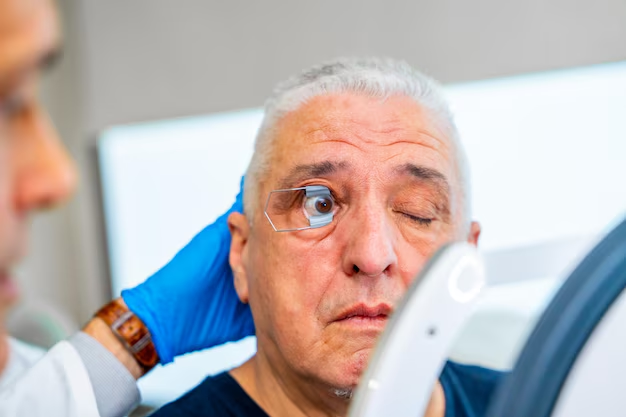Exploring Cataract Surgery: Understanding the Process of Cataract Removal
If you're exploring ways to address vision problems stemming from cataracts, the journey might seem daunting. Cataracts are a common condition affecting many individuals, particularly as they age, but advancements in medical technology have made cataract surgery one of the most frequently performed and successful surgical procedures today. Let’s delve into how cataracts are removed, shedding light on the process, common concerns, and what you can expect before, during, and after surgery.
🌟 What Are Cataracts?
Cataracts occur when the natural lens of the eye becomes cloudy, leading to impaired vision. The lens, situated behind the iris and pupil, focuses light onto the retina, enabling clear vision. Over time, protein clumps within the lens, creating cloudy areas that affect light passage, and eventually blur vision. Common signs include:
- Blurred or clouded vision
- Sensitivity to light and glare
- Difficulty seeing at night
- Fading or yellowing of colors
- Frequent changes in eyeglass or contact lens prescription
📈 The Pre-Surgery Assessment
Before cataract surgery is considered, a comprehensive eye examination is performed. This assessment includes:
- Visual Acuity Test: Measures how well you see at various distances.
- Dilated Eye Exam: Aids in examining retina and optic nerve health.
- Measuring Eye Metrics: Corneal curvature and eye length help determine the suitable replacement lens's power.
👁️🗨️ Doctor Insight: Ophthalmologists focus on how cataracts are affecting your daily activities to decide the surgery's timing. Your lifestyle, urgency for vision improvement, and overall eye health are critical factors.
🛠️ How Cataracts Are Removed: Steps Involved
Cataract surgery primarily involves replacing the clouded lens with an artificial one. There are two main surgical techniques:
1. Phacoemulsification (Phaco)
This is the most common type performed today. Key steps include:
- Small Incision: A tiny incision is made at the side of the cornea.
- Ultrasound Probe: An ultrasonic device breaks the cataract into small pieces, which are gently suctioned out.
- Intraocular Lens (IOL) Placement: A foldable lens is inserted through the same incision and positioned in place of the natural lens.
2. Extracapsular Cataract Extraction (ECCE)
Less frequently used, ECCE involves:
- Larger Incision: Creates a larger opening for lens removal.
- Entire Lens Removal: Unlike phaco, the whole lens is taken out in one piece.
- IOL Insertion: An artificial lens is then placed.
Note: The choice between phaco and ECCE is tailored to individual needs, generally dependent on cataract density and other eye health factors.
🔄 Post-Operative Care and Recovery
Recovery is typically quick, allowing return to most activities within days, although full recovery can span a few weeks. Here’s what typically follows:
- Vision Improvement: Many notice clearer vision almost immediately, with continual improvements over a few weeks.
- Eye Shield: Protects your eye, especially during sleep.
- Avoid Rubbing: Prevents displacement of the lens.
- Follow-Up Visits: Critical for monitoring recovery and adjusting treatments if needed.
🚓 Recovery Tips:
- Avoid heavy lifting or strenuous activities.
- Wear sunglasses to protect against UV light.
- Use prescribed eye drops to mitigate infection risk and inflammation.
🤔 Frequently Asked Questions About Cataract Surgery
Understanding the removal process may raise some common queries:
1. Are There Any Risks Involved?
While cataract surgery is considered safe, as with all procedures, certain risks exist:
- Infection or swelling
- Retinal detachment, though rare
- Potential lens dislocation
2. Will I Need Glasses After Surgery?
While many experience sufficient vision improvements, some may still require glasses for specific tasks such as reading due to residual refractive errors corrected by additional lenses.
🔍 Exploring Lens Options
Intraocular lenses (IOLs) play a vital role in the surgery's success:
- Monofocal IOLs: Most common; designed for one focal distance (usually distance vision).
- Multifocal IOLs: Provide multiple focus points, possibly reducing the need for glasses.
- Toric IOLs: Specifically address astigmatism.
📝 Tip: Discuss your visual needs with your ophthalmologist to determine the best IOL choice for your lifestyle.
🏡 Lifestyle Adjustments and Considerations
Cataracts can disrupt daily activities long before surgery becomes prudent. Here are a few lifestyle modifications that may help mitigate symptoms until surgery is necessary:
- Improved Lighting: Enhances visibility for reading or close work.
- High-Contrast Lenses: In eyeglasses, these can sharpen vision and improve contrast on cloudy days or in dimly lit environments.
- Regular Eye Exams: Track the progression of cataracts and adjust treatments and prescriptions accordingly.
🔖 Key Takeaways for Cataract Patients
📘 Summary of Practical Tips:
- 🌞 Protect Eyes from UV Light: Wearing sunglasses can slow cataract progression.
- 🕵️♂️ Regular Checkups: Keep up with regular eye exams to monitor cataract development.
- 💡 Adapt Your Environment: Use brighter bulbs and add task lighting in areas where you work or read.
- 👓 Choose the Right IOL: Discuss your options regarding intraocular lenses with your healthcare provider.
- 🚶 Follow Post-Surgery Protocols: Wearing protective eyewear and adhering to post-op instructions aids optimal recovery.
Cataract removal is a well-established procedure with consistently positive outcomes for patients. By understanding the process and preparing for the different stages of surgery and recovery, you can approach this experience with confidence and clarity. As always, engaging in open dialogues with your healthcare provider can ensure that your specific needs and concerns are addressed, optimizing your vision and quality of life thereafter.
